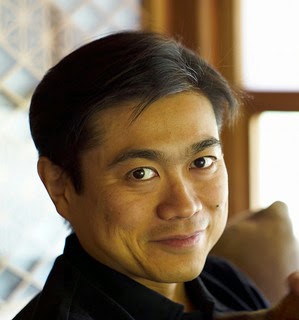SIGGRAPH 2015 Art Papers Chair Victoria Szabo explains the important role of artists and draws attention to what this unique program offers the community at large.
Reminder: Art Papers submissions are due 22:00 UTC/GMT, 27 January 2015.
What is your vision for SIGGRAPH 2015’s Art Papers program?
For 2015, the Art Papers focus is on “critical making,” which reflects the conference theme of Xroads of Discovery. We are especially interested in papers that reveal and exploit the unique affordances of emerging media forms through artistic practice. If Emerging Technology shows us what comes next technologically, Art Gallery demonstrates the creative use of those possibilities. And if the Studio offers the opportunity to explore new tools firsthand, then Art Papers document those innovations and guide us in our aesthetic and technical interpretations of digital art.The process of critical reflection on computer-mediated artwork is relevant not only for artists, but for the whole community. Artists are often the first to see the social and cultural implications of new technologies, and can push the boundaries of technological development through their imaginative transformation of existing tools and techniques. They can also offer early warning systems for maladaptation. This feedback loop between artists and technologists is one that SIGGRAPH nurtures.
How have you seen the Art Papers program develop in the last few years?
Art Papers authors are invited to join the Arts community in formal and informal gatherings. Art Papers has also benefited from closer integration with the rest of the conference. Our papers are presented in regular conference sessions, which draw in a wider crowd than the self-identified “art” group we are nurturing. This is a tremendous benefit to everyone in that crosstalk; it enriches the discussion and provides everyone with extra stimulation for future development.
Similarly, how have you seen the role of artists develop over time?
SIGGRAPH artists are deeply engaged with theory and practice, with aesthetic exploration and computational virtuosity. The boundaries between art and science are porous, and never more so than at the bleeding edge of innovation. Whether you are watching the latest achievements in computer animation, testing out the latest haptic interface, marveling at an ingenious rendering algorithm, or admiring a complex digital installation, you are seeing that phenomenon in action. By attracting the best and brightest in this crossover field, we are witnessing firsthand the next stages in the evolution of our technoculture. For artists, SIGGRAPH is an exciting place because you can see what is happening in all these cognate fields while at the same time developing your own core interests.
What advice would you give to a first-time submitter?
For those writing a paper with a more historical or theoretical focus, I would say again to remember the audience you are addressing, and to be sure you are telling a story or providing a framework that builds upon conversations already taking place in the field. There may occasionally be the odd work of genius that does not fit any categories yet demands to be known, but even this wonder can be presented in a way that contextualizes it for the reader. Also, be aware that we are providing an option to include a digital supplement. This can enrich the work as well.
Other than Art Papers, what are you most looking forward to at SIGGRAPH 2015?
I also love popping into the odd panel where I have almost no idea what is being said, but yet I take away a kernel, concept, or idea that stays with me. I also enjoy meeting up with my SIGGRAPH family, and having those wonderful, wide-ranging conversations that happen when you mix up a bunch of smart people and stimulating content together.
What does your involvement with SIGGRAPH mean to you?
This year’s conference celebrates the intersections of disciplines and the opportunity for discovery across many different areas. How do you feel your work is inspired by other disciplines and can you share a story of when reaching outside your comfort zone led you to a new discovery?
In my day job I teach Visual and Media Studies and run a program called Information Science + Information Studies. However, I went to graduate school for Victorian Literature. My side job was in the Library, where I was asked to help think about whether the WWW might be useful for libraries (this was in the 90s). I learned HTML, helped create archives of Arthurian texts and images, and became extremely excited by the idea that otherwise inaccessible texts could be made available in digital form. (As someone who was writing a dissertation that involved reading obscure novels on microfilm—this was a heady idea.)
All the most interesting things I’ve done since then have started as things I did “on the side”—including participation in SIGGRAPH. I became interested in information visualization because I had a colleague who was teaching it and I liked the idea of revealing hidden patterns through transmediation. A couple years later, I went on to Chair the Information Aesthetics Showcase at SIGGRAPH 2009. Right now I am doing a lot of work with augmented reality applications. This somewhat inobviously grows out of work I have done with colleagues in digital mapping and virtual worlds, and reflects my desire to reconnect the virtual world with lived experience in time and space. So now I’m all excited about game design and what it can tell me about multimodal user experience design for hybrid reality systems. The connections are there, despite seeming disciplinary differences. You never know what you will discover, and what fellow travelers you might meet, when you hang out at the crossroads!




